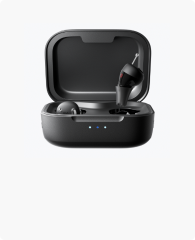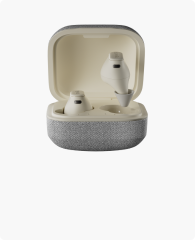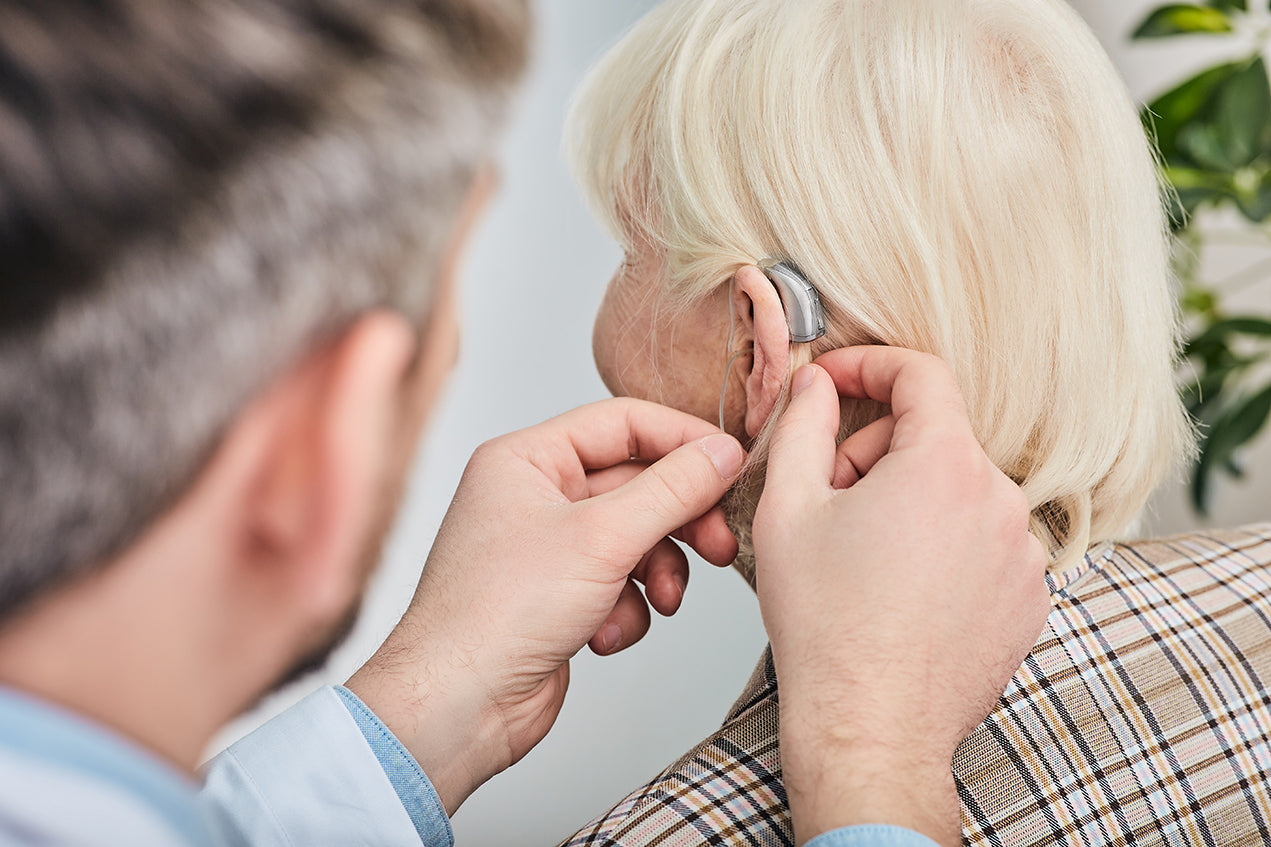Hearing aids have transformed the lives of millions of people with hearing loss, helping them reconnect with the world around them. However, with so many types of hearing aids available, it can be challenging to determine which option best suits your needs. In this blog, we'll cover everything you need to know, from Part 4: Different Types of Hearing Aids to how they work, their cost, and tips for preserving their lifespan—so you can make an informed decision.
🚀 Navigate This Post
- ➤ Part 1: What Are Hearing Aids?
- ➤ Part 2: Hearing Aids: Pros and Cons
- ➤ Part 3: Who Need Hearing Aids?
- ➤ Part 4: Different Types of Hearing Aids
- ➤ Part 5: How does Hearing Aids Work?
- ➤ Part 6: Hearing Aids: Cost and Price
- ➤ Part 7: What You Should Know Before You Purchase Hearing Aids?
- ➤ Part 8: What are Lifespan of Hearing Aids and How to Preserve Them?
You may also be interested in:
- Apple AirPods Hearing Aids or Cearvol: Side-to-Side Comparison
- Why Do My Hearing Aids Squeal Every Time? Experts Reveal the Truth
- Costco Hearing Aids Exposed: Pros, Cons & Best Alternatives
Part 1: What Are Hearing Aids?
Hearing aids are devices designed to assist individuals with hearing loss by amplifying external sounds and delivering them to the ear more clearly. They help bridge the gap between natural hearing and the challenges posed by hearing impairment.

There are two main categories of hearing aids:
1. Prescription Hearing Aids: These devices are fitted and customized by an audiologist based on a detailed hearing assessment. They meet needs of various degrees of hearing loss and often include advanced features, such as noise filtering and directional microphones.
2. Over-the-Counter (OTC) Hearing Aids: These devices can be purchased without a prescription and are suitable for individuals with mild to moderate hearing loss. OTC hearing aids offer an accessible option, but without the precise customization. But with development of tech, some OTC hearing aids perform much better than before.
To learn more, you can check out our in-depth article about about the differences between prescription and OTC hearing aids.
Part 2: Hearing Aids: Pros and Cons
When considering hearing aids, it's important to weigh the benefits and potential drawbacks. While they can significantly improve quality of life, they also come with certain limitations.
Pros:
1. Enhanced communication: The primary benefit of hearing aids is the ability to hear conversations more clearly, reducing the frustration of asking others to repeat themselves.
2. Improved media enjoyment: Users can enjoy television and music without straining to catch every word, making leisure activities more enjoyable.
3. Positive health outcomes: Research indicates that treating hearing loss can lead to numerous health benefits, including memory improvement, decreased fall risk, mood enhancement, reduced anxiety and depression, increased brain processing speed, and lower dementia risk. Some report that tinnitus is connected to hearing loss. For more insights on how hearing aids can also help with conditions like tinnitus, you can explore our detailed overview clicking the link.

Diamond X1 - Best Hearing Aids with Bluetooth
Newcomer Price
$249.99 $309.99
- ✔ Adaptive sound modes for clear hearing.
- ✔ Bluetooth for calls & streaming.
- ✔ App-controlled, customizable adjustments.
- ✔ Rechargeable & fast charging.
- ✔ Ideal for mild to moderate hearing loss.
Cons:
1. Adjustment period: Getting used to a hearing aid takes time. Initially, users might find their own voice sounds different, and they may need to adjust their listening skills to accommodate amplified sounds.
2. Not a cure for hearing loss: It's important to understand that hearing aids won't restore normal hearing. They amplify soft sounds but do not replace lost hearing capabilities.
3. Practice required: Users will need to practice using their hearing aids in various environments, as the way sounds are perceived can differ significantly based on surroundings.
4. Follow-up visits: Regular follow-ups with hearing specialists may be necessary to make adjustments and ensure the devices are functioning optimally. Some providers include these follow-up visits in the initial cost, so taking advantage of them is recommended.
5. Cost: High-quality hearing aids can be quite expensive, often ranging from hundreds to thousands of dollars, which can be a barrier for many.
While hearing aids can improve quality of life, it's essential to approach their use with realistic expectations and a commitment to adaptation. The potential benefits can far outweigh the challenges when users invest the time and effort to adjust.
Part 3: Who Need Hearing Aids?
Not everyone with hearing loss can benefit from hearing aids, and only 1 in 5 individuals who could see improvement. Hearing aids are mainly for those with damage to the inner ear or the nerve connecting it to the brain. Conductive hearing loss, caused by issues in the ear canal, eardrum, or middle ear, often responds well to medical treatments, though these may not suit everyone. Some individuals are also born without an external ear or ear canal, making conventional hearing aids unsuitable.

If you think you have mild to moderate hearing loss, you can buy an OTC hearing aid online or in stores. However, these aids are only for mild to moderate loss and are not suitable for severe or profound hearing loss. If you or someone you know suspects more significant hearing loss, consult a licensed hearing professional, as OTC aids may not provide enough amplification for severe cases.
Additionally, seek help with hearing aids if you:
1. Feel others speak too softly or mumble.
2. Frequently ask for repetitions.
3. Have trouble hearing on the phone.
4. Struggle in group settings.
5. Prefer the TV or radio volume louder than others.
Part 4: Different Types of Hearing Aids
When it comes to hearing aids, there are several types designed to accommodate various levels of hearing loss and individual preferences. Here's an overview of the most common types:

1. Behind-the-Ear (BTE) Hearing Aids
BTE hearing aids sit behind the ear, connected to a mold or tube that directs sound into the canal. They are suitable for all types of hearing loss and are ideal for severe cases.
2. In-the-Ear (ITE) Hearing Aids
Custom-made to fit the outer ear, ITEs are larger, allowing for bigger batteries and features. They accommodate mild to severe hearing loss.
3. In-the-Canal (ITC) Hearing Aids
Partially inserted into the ear canal, ITCs are less visible and suited for mild to moderate hearing loss, providing a natural sound experience.
4. Completely-in-Canal (CIC) Hearing Aids
CICs fit entirely within the ear canal, making them virtually invisible. They are best for mild to moderate hearing loss but may have limited features.
5. Receiver-in-Canal (RIC) Hearing Aids
RIC devices have a receiver in the canal, connected to a small case behind the ear. This design is discreet and suitable for mild to severe hearing loss.
6. Bone-Conduction Hearing Aids
These devices transmit sound vibrations directly to the inner ear through the skull, often used for conductive hearing loss or for those who can't use traditional aids.
7. Implantable Hearing Aids
Surgically implanted, these devices stimulate the auditory nerve directly, suitable for severe to profound hearing loss when traditional aids aren't effective.
Selecting the right hearing aid depends on your hearing needs and lifestyle. Consult a hearing professional to find the best option for you.
Part 5: How does Hearing Aids Work?
Hearing aids are advanced devices designed to enhance hearing by amplifying sound. They feature a microphone that captures sound from the environment, which is then amplified for better clarity. Many modern hearing aids include a digital signal processor (DSP) to convert amplified sound into digital signals, enabling noise reduction and speech enhancement. The receiver transforms these digital signals back into sound waves and directs them into the ear canal, while an earmold or dome ensures comfortable delivery into the ear, depending on the hearing aid type. To better understand how these devices compare to simpler amplification options, you can refer to our blog post about hearing aids and amplifiers.
Hearing aids can be categorized into two main types: analog and digital. Analog hearing aids amplify sound in a linear manner, simply increasing the volume without differentiating between sound types, making them less advanced. In contrast, digital hearing aids convert sound waves into digital signals, allowing for greater customization based on the user's hearing loss profile. These devices can be programmed to amplify specific frequencies and often include features like noise reduction and feedback suppression, enhancing the overall listening experience. If you want to know more about how do hearing aids work, you can check this blog for details.
Part 6: Hearing Aids: Cost and Price
When considering hearing aids, one of the most significant factors is the cost. Understanding the price range and what influences these costs can help you make informed decisions about your hearing health. Here's a comprehensive look at the various aspects related to hearing aid costs.
1. Average Cost of Hearing Aids
The price of hearing aids can vary widely depending on several factors, including technology level, brand, and style. On average, hearing aids can range from $1,000 to $4,000 per device. Some advanced models, particularly those with cutting-edge features, can cost upwards of $6,000. It's important to note that these prices often reflect the cost of the device itself, excluding additional services.
2. Does Insurance Cover Hearing Aids?
Coverage for hearing aids varies based on location, insurance type, and policy specifics:
Private Insurance: Most plans do not cover hearing aids unless specified. Some may offer partial coverage if hearing loss is linked to medical conditions.
Medicare: Typically does not cover hearing aids or fitting exams. However, certain Medicare Advantage Plans (Part C) may offer coverage.
Medicaid: Coverage varies by state, with some offering full or partial benefits, especially for children and those with severe hearing loss.
Veterans Affairs (VA): Veterans may qualify for free or discounted hearing aids through the VA, depending on their circumstances.
3. Other Options for Financial Assistance
If insurance doesn't cover hearing aids, consider these alternatives:
Payment Plans: Many audiologists and retailers offer financing options.
Nonprofit Programs: Organizations like the Hearing Aid Project and Lions Club may provide aids at lower or no cost.
FSA or HSA: Hearing aids qualify as medical expenses, allowing you to use FSA or HSA funds to help with costs.

Understanding insurance and financial options is essential when investing in hearing aids. Check your insurance plan, explore assistance programs, and consult professionals for the best solutions for your needs and budget.
Part 7: What You Should Know Before You Purchase Hearing Aids?
Before purchasing hearing aids, it's essential to understand the key considerations to ensure you make an informed choice that best suits your hearing needs.
1. Get Your Hearing Tested
Regardless of whether you opt for prescription or over-the-counter (OTC) hearing aids, a hearing test is crucial. For prescription hearing aids, you'll need to visit an audiologist who can perform a comprehensive hearing evaluation. This professional assessment will determine the specific nature and extent of your hearing loss, allowing for a tailored solution. In contrast, OTC hearing aids can often be evaluated using a mobile app that provides a preliminary assessment of your hearing capabilities, making them a more accessible option for some users.
2. Consider the Type of Hearing Aid
Prescription hearing aids typically offer more customization and advanced features, as they are fitted based on the audiologist's recommendations. These devices can be adjusted to meet your specific hearing profile. OTC hearing aids, while easier to obtain, may not offer the same level of personalization. Understanding the differences can help you choose the right option for your lifestyle and hearing needs.
3. Trial Period and Return Policy
Many hearing aid dispensers offer trial periods, allowing you to test the device before making a final commitment. This is important as it can take time to adapt to a new hearing aid. Ensure you clarify the terms of the trial, including any costs involved and whether you can return the device for a refund if it doesn't meet your expectations.

4. Future-Proofing Your Choice
Consider whether the hearing aid you choose can accommodate future changes in your hearing. Some devices are designed to provide additional amplification if your hearing loss progresses. This adaptability can save you money in the long run by reducing the need for replacements.
5. Warranties and Coverage
Check if the hearing aid comes with a warranty that covers both parts and labor for a specified duration. Some warranties may also include additional services, such as follow-up appointments and adjustments, which can be beneficial for long-term maintenance.
6. Be Cautious of Claims
It's important to be aware that hearing aids cannot restore normal hearing or completely eliminate background noise. Be wary of advertisements that make exaggerated claims about the effectiveness of certain devices.
7. Plan for the Costs
Hearing aids can range significantly in price, from approximately $1,500 to several thousand dollars each. Consider not only the cost of the devices themselves but also additional expenses for professional services, accessories, and maintenance. Discuss your budget and needs with your audiologist to find a solution that works for you.
Understanding these factors will empower you to make the best decision when purchasing hearing aids, ultimately leading to a more satisfying experience and improved hearing health.
Part 8: What are Lifespan of Hearing Aids and How to Preserve Them?
Taking proper care of your hearing aids is essential for maximizing their lifespan and ensuring optimal performance. While the average lifespan of hearing aids can vary based on usage and care, they generally last between three to seven years. Here are some key tips to help you maintain your devices:
Regular Cleaning: Follow the cleaning instructions provided by your audiologist. Regularly clean your hearing aids to prevent the buildup of dirt and wax, which can affect their performance.
Temperature and Moisture Control: Keep your hearing aids away from extreme temperatures and high humidity. Avoid exposing them to environments that could cause moisture damage, such as bathrooms or near cooking areas.
Avoid Personal Care Products: When applying personal care products like hairspray or lotion, do so before putting in your hearing aids. These products can cause buildup and potentially damage the devices.
Power Off When Not in Use: Always turn off your hearing aids when you're not wearing them. This not only helps preserve battery life but also protects the internal components from unnecessary wear.
Battery Management: Replace dead batteries promptly. Regularly check your batteries and keep spares on hand to ensure your hearing aids are always functional.
Professional Maintenance: If you use prescription hearing aids, schedule annual visits with your audiologist for necessary adjustments and recalibration. These check-ups can help identify any issues early and keep your devices functioning optimally.
By following these guidelines, you can extend the lifespan of your hearing aids and enjoy clearer sound for years to come.
Conclusion
Understanding your options for hearing aids is crucial for improving your quality of life and enhancing communication. Whether you choose prescription or over-the-counter devices, regular maintenance and professional consultations will ensure optimal performance. If you suspect you could benefit from hearing aids, reach out to a hearing specialist or explore our range of products to help you reconnect with the sounds of life.








Leave a comment
All comments are moderated before being published.
This site is protected by hCaptcha and the hCaptcha Privacy Policy and Terms of Service apply.